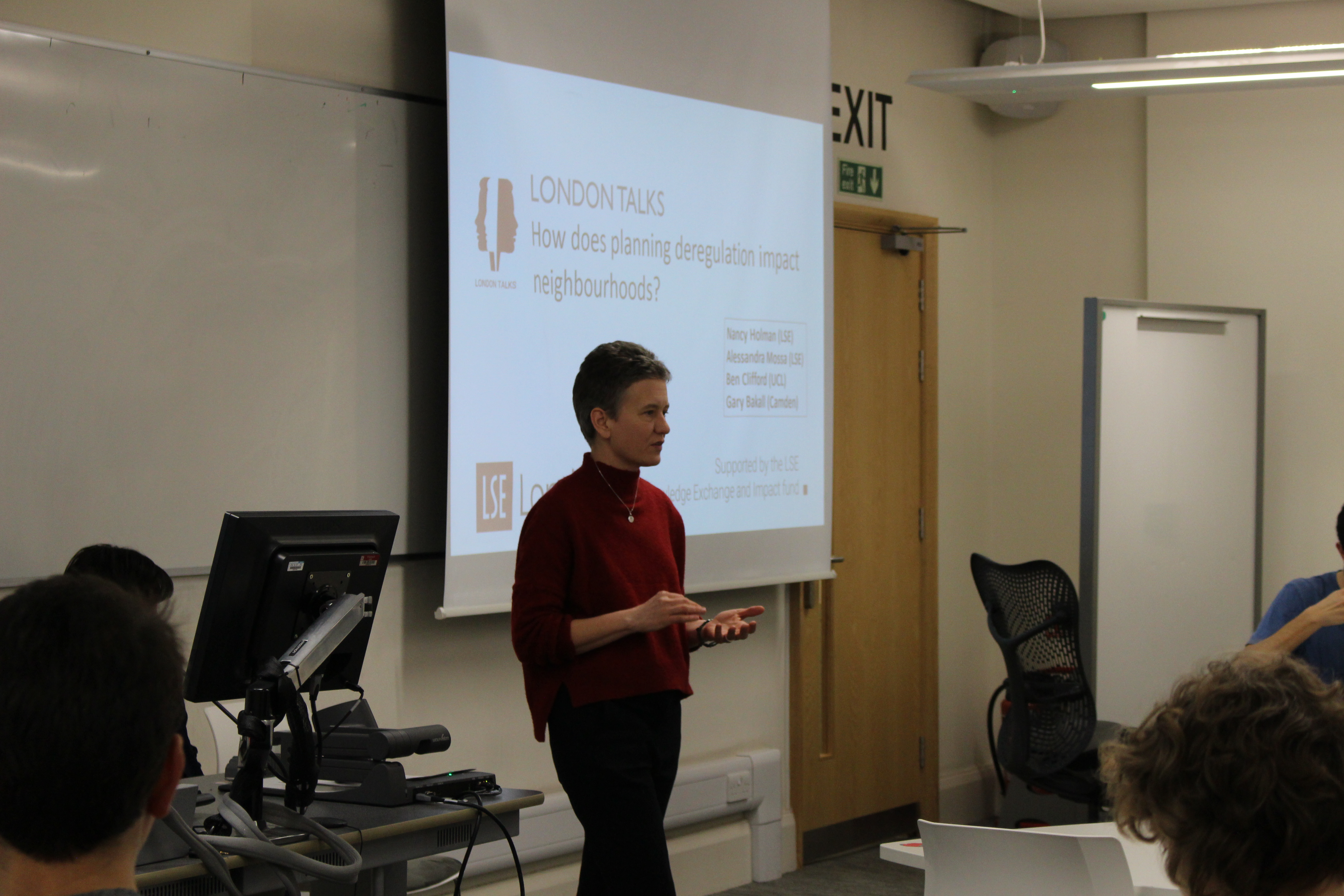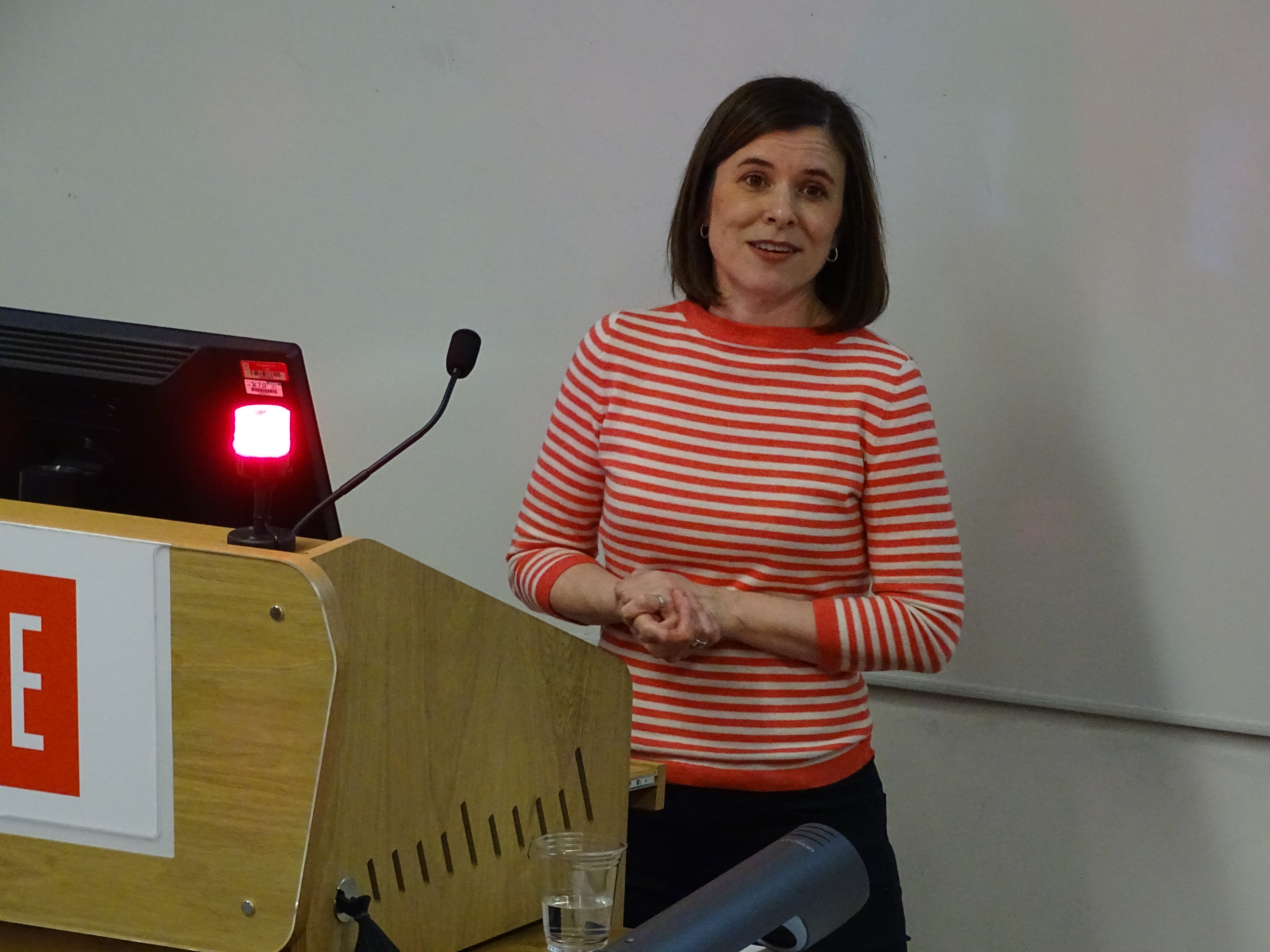The final London Talk of 2019 revolved around the, at times, contentious topic of density. The draft London Plan projects that 66,000 new homes will have to be completed yearly in order to keep up with population growth. Even as these demands are made clear, one might question whether the resultant density increase is a bit too much, too fast. The evening’s host, LSE distinguished policy fellow Kath Scanlon, was joined by speakers Tom Sykes, Senior Design & Quality Manager for Transport for London, Sripriya Sudhakar, Head of Regeneration at London Borough of Tower Hamlets, Lucia Cerrada Morato, a high density development project manager at Tower Hamlets, and Casper Laing Ebbensgaard, a cultural geographer at the Queen Mary University of London.
The evening’s first speaker, Tom Sykes, focused on how increased housing can be delivered in the best way possible. London is often referred to as a city of villages and as such sensitivity to local context is key to delivering successful developments. This has been an important aspect of TfL’s work to deliver housing and intensification of transport nodes. Their efforts are guided by two overarching values: 1. long term stewardship over public assets, and 2. that people should be at the heart of development. These can be broken down into 6 development principles, examples being responding to local surroundings, and promoting transparent engagement. To illustrate these values, Tom shared three developments which TfL has been working on, one being Arnos Grove station. TfL intends to revitalise it, bring in more greenery and motivate people to use sustainable transportation. Tom stressed that, while many are worried about the harmful effects of increased density, it can in fact be very pleasant.
The second presentation was delivered by Sripriya Sudhakar and Lucia Cerrada Morato. They sought to provide the borough perspective on growth management. As one of London’s smallest and densest boroughs, Tower Hamlets has been allocated high housing number targets. The challenge for the borough then is not only to deliver more housing, but also to provide all of the relevant services to ensure high levels of resident satisfaction. Due to the lack of feedback from residents, Tower Hamlets has embarked on a study to better understand which principles to pursue to provide higher quality housing. Tentative findings indicate that the following five design topics are crucial: 1. focusing on children and young people, 2. promoting social cohesion through mixed and balanced communities, 3. looking at the entirety of residents’ lifestyles, 4. viewing each building as a system, and 5. ensuring healthy neighbourhoods. These areas will all be important in Tower Hamlets’ work to best respond to their ambitious housing target.
Final presenter was Casper Laing Ebbensgaard. He offered a slightly different approach, talking instead about what kind of knowledge is used to inform design and urban planning processes. Part of his work involves looking at how lighting in taller residential areas in east London impact on people’s ability to live meaningful lives. What Casper has found in his research is that many residents feel that lighting which does meet sustainability standards does not illuminate well. While these lights are all very modern and high tech, residents avoid using them since they don’t feel right and aren’t conducive to their lifestyle preferences. To Casper, this speaks of a process which has gone awry. Although residents’ perceptions are more qualitative and difficult to attach measurements to, it is very important that decision makers are equipped with appropriate skills and knowledge to advance better decisions. To this end, research into residents’ subjective preferences can assist in informing these decisions.
After the presentations, Kath invited the audience to join in on the conversation. The first question focused on the adaptability of the new housing being built. Tower Hamlets has been working to promote units which will enable people to live longer in their areas or even apartments. A London Council member shared how in Oslo, all new build, larger units have to be able to convert part of the living space into studios to be sublet. Dr Nicholas Falk then shared his concern on whether we are simply building filing cabinets for the poor. The representatives from Tower Hamlets lamented that as a local authority they have less resources to fight back, resulting in a loss of negotiation powers. However, they still possess enough to refuse private developments which do not provide adequate public good. The Q&A also touched on subjects such as the liveability of tower blocks, and whether transport nodes are already fully developed.
This concluded the dialogue series for 2019. Make sure to be on the look-out for announcements of future events as the new year approaches. All of us at LSE London want to thank you for your engagement and wish you a Merry Christmas and a Happy New Year.





